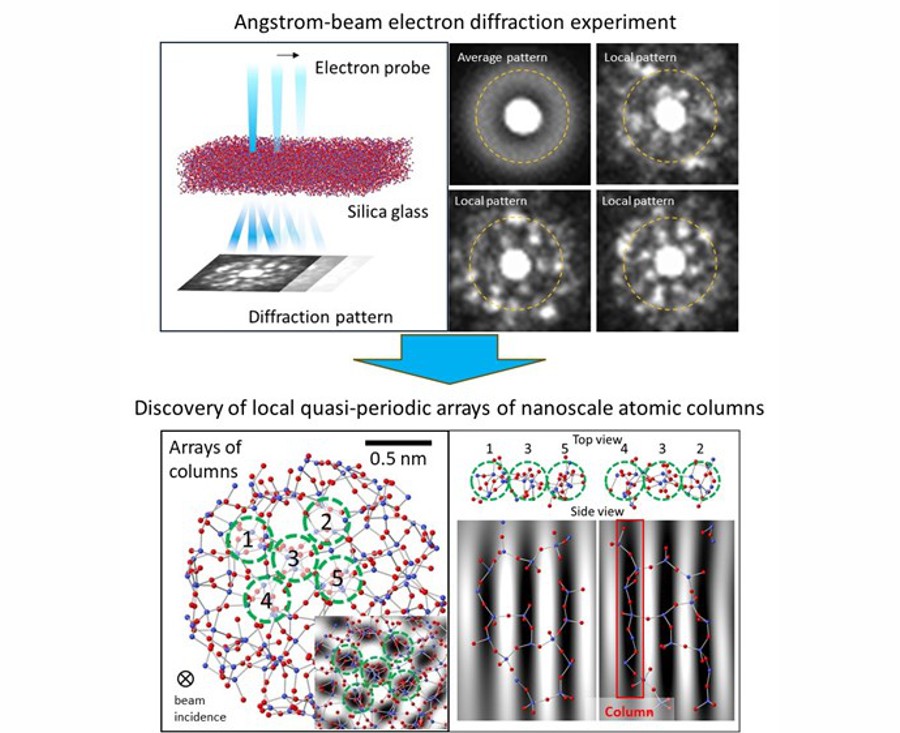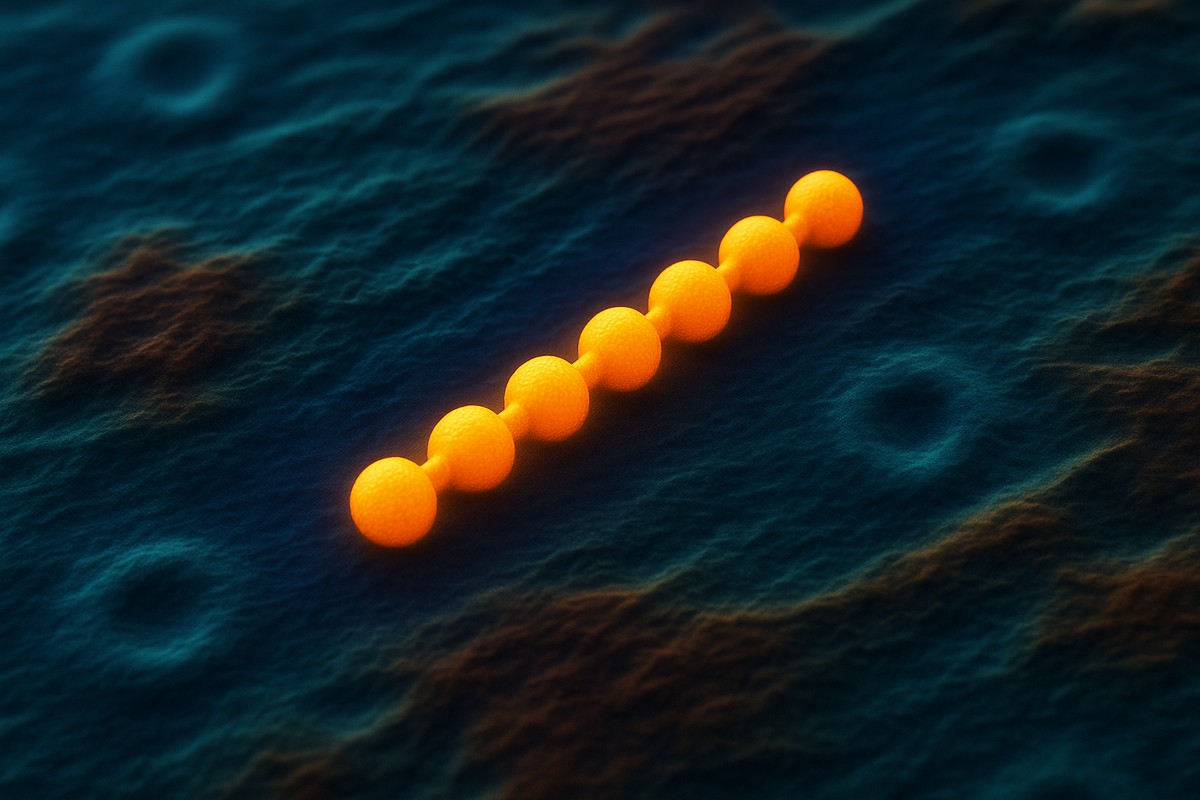Atomic Density Fluctuations in Silica Glass
The intermediate range order of covalent glasses has been extensively studied in terms of the first sharp diffraction peak (FSDP), but the direct observation of the atomic density fluctuations that give rise to FSDP is still lacking. Addressing this gap, researchers employed a new energy-filtered angstrom-beam electron diffraction technique to provide the direct experimental observation for the origin of FSDP in silica glass, providing important insights into the atomic structure of glasses.
In materials science, particularly in the study of glasses, the intermediate range order (IRO) is one of the most intriguing research areas owing to its significant influence over the physical properties of glasses. The IRO refers to the structural arrangement of atoms beyond the short-range order (atomic arrangement within a few atomic distances) but shorter than the long-range order (arrangement patterns over macroscopic distances). Notably, for covalent glasses, the IRO is marked by atomic density fluctuations.
Scattering experiments provide a distinct signature of IRO. In these experiments, high-energy beams like X-rays and neutron beams are scattered by the atoms of a sample. The scattered waves then interfere constructively or destructively, resulting in bright or dark spots respectively. The bright spots are called diffraction peaks. For IRO in covalent glasses, a distinct diffraction peak called the first sharp diffraction peak (FSDP) has been observed. Various interpretations for the origin of FSDP have been proposed, including quasilattice planes, which are atomic planes that have some repeating patterns, or the presence of interstitial voids, which are gaps in the atomic arrangement. However, the direct experimental observation of these atomic density fluctuations has remained elusive.

In a new study, a team of researchers from Japan, led by Professor Akihiko Hirata from the Department of Materials Science at Waseda University and including Professor Motoki Shiga from Tohoku University and Dr. Shinji Kohara from the National Institute of Materials Science, has employed an innovative technique to directly observe the origin of FSDP and the atomic density fluctuations in silica (SiO2) glass. “We combined our angstrom-beam electron diffraction (ABED) technique, which we previously employed for observing atomic-scale structures in various glass materials, with an energy filter device to successfully observe the diffraction peaks related to FSDP and the related atomic arrangements of SiO2 glass,” explains Prof. Hirata. Their study was published in the journal NPG Asia Materials on 10 May 2024.
In the study, the researchers first conducted ABED experiments with an energy filter device on a thin SiO2 glass sample, obtaining clear diffraction patterns associated with FSDP. Next, to understand its origin, they conducted virtual ABED experiments using a structural model of SiO2, developed through molecular dynamics and Monte Carlo simulations. This model could reproduce the high-energy X-ray and neutron scattering experiments, including FSDPs of real samples, verifying the validity of the model. The virtual ABED experiments conducted on the model produced similar diffraction patterns as real experiments. The researchers then extracted the atomic arrangements that generated these patterns from the structural model.

Analysis revealed that the periodic atomic density fluctuations corresponding to FSDP originated from alternating arrangements of chain-like columnar atomic configurations and interstitial tube-like voids. Notably, the tube-like voids were limited to a length of two nanometers. The columnar arrangements formed pseudo-two-dimensional atomic planes, providing a more specific description of the quasilattice planes. Furthermore, while these local structures did not precisely correspond to crystals which exhibit consistently ordered atomic structures throughout the material, they displayed partially similar features. These findings provide important insights into the IRO of glasses.
Prof. Hirata emphasizes the potential applications of, particularly in batteries as anode materials or solid-state electrolytes: “The fundamental insights into atomic density fluctuations gained from this study can contribute to accelerating the development of these materials, leading to improvements in battery performance.”
Overall, this research advances our understanding of the atomic structure of glasses, providing new directions for material control and development.




















